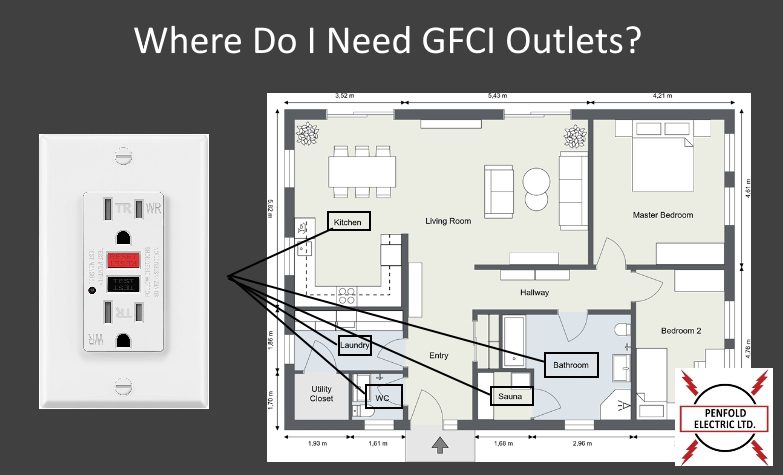A GFCI or ground fault circuit interrupter is a type of outlet that serves an important safety purpose. These outlets work by monitoring the amount of electricity that is flowing to a circuit and tripping or shutting off the power to that circuit if something isn’t quite right. This in turn helps to prevent overheating of wires, electrical fires and reduces the risk of electrical shocks and burns.
Though you likely already have a GFCI outlet in your home you may be wondering, do you really need them? and where do you need to have GFCI outlets in a home? In this article, we will guide you in knowing where GFCI outlets should be in your home and other considerations to help keep your home safe both indoors and outside. For more information about how GFCI outlets work check out our post What is a GFCI Outlet and How Does it Work.
Where Do I Need GFCI Outlets?
Having GFCI outlets is not only a good idea, but it is mandatory in Canada too. For decades Canada has mandated that in any area where water and electricity are in proximity, a GFCI must be used. This means that areas of your home such as kitchens, bathrooms, laundry rooms, basements and even garages are all areas where a GFCI outlet should be used. It is important to note that outlets within six feet of a sink or water source should be GFCI outlets regardless of what the room is used for.
It is not necessary to have a GFCI outlet in every room in your home. Living rooms, bedrooms and home offices that do not have a sink will not necessarily need a GFCI outlet. As you likely see in your own space, both GFCI and regular outlets are commonly used.
Do All Kitchen Outlets Have to Be GFCI?
Though all receptacles in a kitchen that are at countertop level must be protected by a GFCI outlet, not every individual outlet must be a GFCI receptacle. The way GFCI outlets are set up allows for one GFCI outlet to protect the others within the space. The licensed and certified electrician working in your home will know best how your GFCI outlet should be set up to ensure that your home complies with regulations and is as safe as possible for your family.
Do Bathroom Lights Need to Be GFCI Protected?
Bathroom lights such as pot lights or decorative lighting are not required to be GFCI protected. Though these electrical components of your home are located near water, they do not present the same hazard that unprotected outlets would. It is important to remember that GFCI outlets are required in bathrooms and are a crucial safety feature for areas where both water and electricity are present.
Should My Pool Pump Be on A GFCI Breaker?
Your pool pump should absolutely be on a GFCI breaker as with all other electrical components of your pool or hot tub. Unlike inside homes where conventional outlets are used, all outdoor electrical outlets must be GFCI protected. As outdoor receptacles may come in contact with any variety of weather conditions it is essential that each outlet be GFCI protected to keep your home and outdoor spaces safe.
When it comes to the installation of GFCI outlets in your home it is always a good idea to hire a licensed election who is familiar with residential electrical services. Your electrician will have the knowledge to know where a GFCI receptacle should be installed as well as the correct way to install one for the most protection in your home.
At Penfold Electric, we are always here to assist you with your residential and commercial electrical service needs. Do not hesitate in reaching out to us for assistance with your electrical service projects. We would be pleased to help you ensure your job gets done safely and correctly the first time. You can expect tenfold from Penfold.

